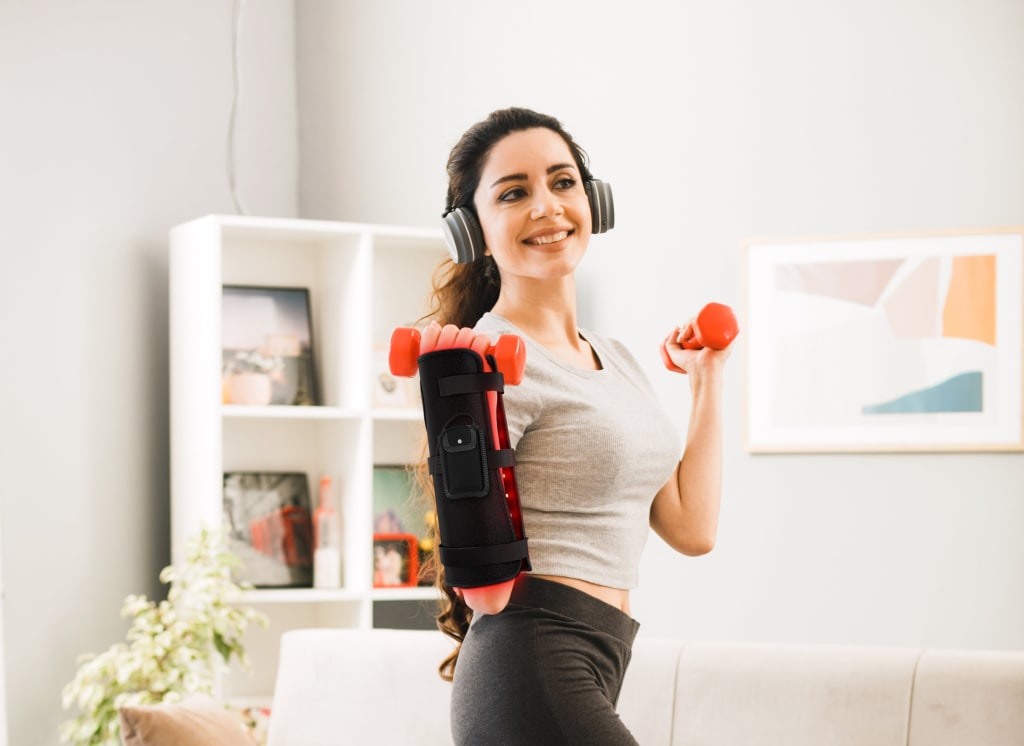How I Found Relief for My Frozen Shoulder Pain at Night
Cassie Wang

I never thought I would have to deal with frozen shoulder. I was always active and healthy, and I took good care of my body. But one day, I woke up with a sharp pain in my left shoulder, and I couldn’t move it much. I thought I had slept in a bad position, or maybe I had pulled a muscle. I tried to ignore it, hoping it would go away on its own.
But it didn’t. It got worse. The pain became unbearable, and the stiffness became extreme. I could barely lift my arm above my head, or reach behind my back. I couldn’t do simple things like brushing my hair, putting on a jacket, or driving. I felt like I had lost a part of myself.
The worst part was the night. I couldn’t sleep well, because every time I moved my arm, I felt a jolt of agony. I tried different pillows, different positions, different medications, but nothing helped. I was exhausted, depressed, and hopeless.
I went to see a doctor, and he diagnosed me with frozen shoulder, also known as adhesive capsulitis. He explained that it was a condition that caused inflammation and scarring in the shoulder joint, and that it usually affected people between 40 and 60 years old. He said that the cause was unknown, but that it could be triggered by injury, overuse, or hormonal changes. He also said that it could last for months or even years, and that there was no cure.
He prescribed me some anti-inflammatory drugs and painkillers, and referred me to a physical therapist. He said that the only way to improve my condition was to do exercises and stretches to restore my range of motion and strength. He warned me that it would be painful and slow, but that I had to be patient and persistent.
I followed his advice, and started doing physical therapy. It was hard, and sometimes I wanted to give up. But I kept going, because I wanted to get better. I also did some research online, and learned more about frozen shoulder. I found out that there were some things that I could do at home to ease my pain and discomfort, especially at night. Here are some of the tips that I found helpful:
Use a pillow to support your shoulder. I placed a pillow under my arm, or hugged it to my chest, depending on what felt comfortable for me. This helped reduce the pressure and tension on my shoulder joint, and prevented it from dropping or rolling forward.
Avoid sleeping on your affected shoulder. I learned that sleeping on my affected shoulder could worsen the inflammation and pain, and limit the blood flow to the area. I tried to sleep on my back, or on my opposite shoulder, with my arm slightly elevated. I also used a wedge pillow or a recliner chair to prop myself up and reduce the strain on my shoulder.
Do some gentle stretches before bed. I did some gentle stretches before bed to loosen up my shoulder muscles and improve my range of motion. This made it easier for me to find a comfortable sleeping position, and reduced the stiffness and pain in the morning. Some of the exercises that I did were pendulum swings, cross-body reach, and towel stretch. You can find more details and instructions on these exercises online.
Apply heat or cold therapy. I applied heat or cold therapy to my shoulder to ease the pain and inflammation. Heat relaxed my muscles and improved blood circulation, while cold numbed the nerve endings and reduced swelling. I used a heating pad, a hot water bottle, a warm bath, or a microwaveable rice bag for heat therapy, and an ice pack, a frozen gel pack, or a bag of frozen peas for cold therapy. I applied the heat or cold for about 15 to 20 minutes, and repeated as needed. I made sure to wrap the heat or cold source in a towel or a cloth to protect my skin from burns or frostbite.
Try red light therapy. This was the most surprising and effective tip that I found. Red light therapy is a natural and non-invasive treatment that uses low-level wavelengths of light to stimulate cellular healing and regeneration. It can help reduce inflammation, pain, and stiffness in the shoulder joint, and improve the function and mobility of the joint. Red light therapy can also enhance the production of collagen and elastin, which are essential for the health and elasticity of the shoulder capsule.
I discovered red light therapy online, when I was looking for alternative treatments for frozen shoulder. I was skeptical at first, but I decided to give it a try. I ordered a device called a medical-grade red light therapy pad, which is a flexible and adjustable belt that can wrap around your shoulder and deliver therapeutic light to the affected area. I used the red light therapy belt for about 10 to 15 minutes a day, preferably before bed, to ease my frozen shoulder pain and promote my recovery.
I was amazed by the results. After a few weeks of using the red light therapy belt, I noticed a significant improvement in my shoulder condition. The pain and inflammation were reduced, and the range of motion and strength were increased. I felt more comfortable and confident in my shoulder, and I slept better at night.
Red light therapy was safe and effective, and had no known side effects or risks. However, if you have any medical conditions or are taking any medications, you should consult your doctor before using red light therapy.
I am not saying that red light therapy is a miracle cure, or that it can replace physical therapy or medication. But I am saying that it is a great supplement to your treatment plan, and that it can make a big difference in your quality of life. If you are suffering from frozen shoulder, or know someone who is, I highly recommend that you try red light blue light therapy. You have nothing to lose, and everything to gain.
I hope you enjoyed reading my story, and that you found it helpful and informative. If you have any questions or comments, please feel free to share them below. I would love to hear from you. Thank you for reading, and have a good night!






Comments
There are no comments for this story
Be the first to respond and start the conversation.